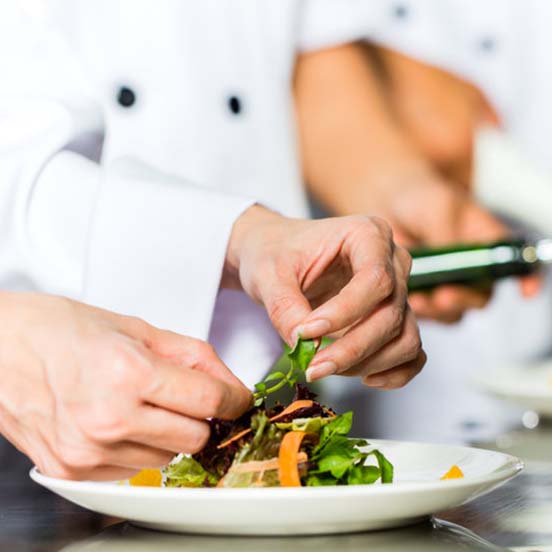OBJECTIVES:
General objectives:
• Knowing the basic concepts about food safety.
• Mastering the properties of food and the factors that cause its modification due to the alteration or contamination of it.
• Acquiring good food handling practices at the professional and personal level.
• Obtaining the necessary knowledge to ensure the safety of food in each of the stages in the food chain.
Specific objectives:
• Knowing the types of toxin infections as well as their effects, modes of appearance and control, etc.
• Mastering the mechanisms of food preservation.
• Learning the measures to prevent food contamination.
• Becoming aware of the importance of taking preventive measures in the moment of food handling.
• Acquiring the general and specific rules of hygiene in the handling of foods.
CONTENTS:
Learning unit 1. Food security
Introduction
1. Food and food chain
1.1. Production
1.2. Food industry
1.3. Commercialisation or sale
1.4. Consumers
2. Food security
3. The food handler
3.1. Obligations of the food handler
3.2. Personal hygiene requirements
3.3. Training
3.4. Training accreditation
4. History of food security
5. Impact of food security
5.1. Consequences of inadequate hygienic practices
5.2. Advantages of correct hygienic practices
Key points
Learning unit 2. Alteration and contamination of food
Introduction
1. Alteration of food
1.1. Physical causes
1.2. Chemical causes
1.3. Biological causes
2. Contamination of food
2.1. Foodborne diseases
2.2. Most frequent causes of contamination
3. Chemical and physical contamination
4. Biological contamination
4.1. Factors that favour the development of microorganisms
4.2. Whic microorganisms cause toxic infections?
5. Food preservation
5.1. Physical preservation methods
5.2. Chemical preservation methods
5.3. Other methods of preservation
6. Basic measures in prevention
Key points
Learning unit 3. Correct practices of hygiene
Introduction
1. Hygiene of the handler
1.1. Bad hygienic habits
1.2. Good hygienic habits
2. Hygiene of premises, facilities and equipment
2.1. Cleaning and disinfection
2.2. Where, when and with what to clean
2.3. The responsibility for the cleaning and what to clean
2.4. Material and equipment used in cleaning
2.5. General cleaning recommendations
2.6. Factors that may affect a defective cleaning and disinfection
3. Pest control: anti-rat and fumigation
3.1. Anti-rat control
3.2. Fumigation
4. Potable water control
4.1. Characteristics of the installation
4.2. Periodic checks
4.3. Verification procedure
5. Waste control
5.1. Good practices in waste management
5.2. Food handling and the environment
6. Maintenance of facilities
7. Traceability and suppliers
7.1. Raw materials and suppliers
Key points
Learning unit 4. The self – control systems. The HACCP
Introduction
1. General concepts
2. Structure of self-control systems
3. Legal requirements
Key points



